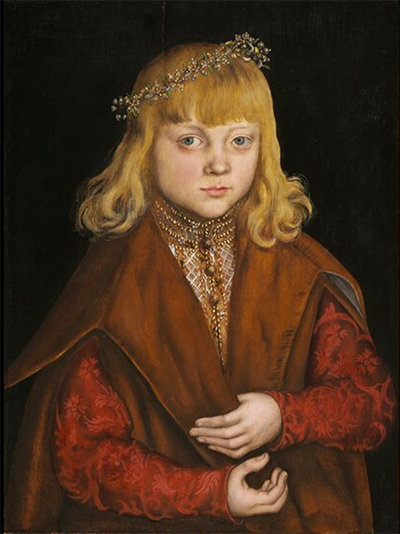Painted in oil and tempera on lime wood in 1517, A Prince of Saxony is one of a set of two paintings by the court painter at the time of Wittenberg, Lucas Cranach. Cranach was one of the leading portrait painters of his day and his work was continually in high demand.
As many of his friends were powerful leaders in the Reformation Protestant movement, much of Lucas Cranach's works are either portraits of Princes and Princesses or religious scenes depicted in a similar portrait style. A Prince of Saxony is a companion painting to a second which depicts a Princess, to whom one assumes he was betrothed. The Prince in question is dressed in the traditional and finest Saxony garb of its era and his crown signifies his engagement to be married. Some critics have also conjured that the two children in the companion paintings may in fact have been the children of Duke George the Bearded.
In any case, even if they were in fact brother and sister, the assumption that they were to be married pervades. His artwork is rich with dark autumnal colours and the shadows and contours of the face give his portraits an almost photographic quality. The attention to detail with the curling of the fingertips and hair waving over the young boy's shoulder gives the portrait a quiet stillness, as if at any moment the young Prince might once again come to life. Lucas Cranach, who is also sometimes referred to as Lucas Cranach the Elder, was part of the German Renaissance group of painters and A Prince of Saxony is typical of his work which was most often painted on wood. Being as he was appointed court painter for much of his career, Cranach's subjects were mostly Royals and leaders of the Reformation, with Martin Luther said to be a close friend of the artist.
His portraits of such important historical figures are not only significant in terms of artistic merit, but also historically as it is thanks to his works that we know today what these men and women may have looked like. After his death, his son Lucas Cranach the Younger continued to try and paint in his style, with his father still seen today as one of the most successful German artists of his time. For those wishing to view the artwork for themselves, the painting is currently on display in the National Gallery of Art, Washington.




